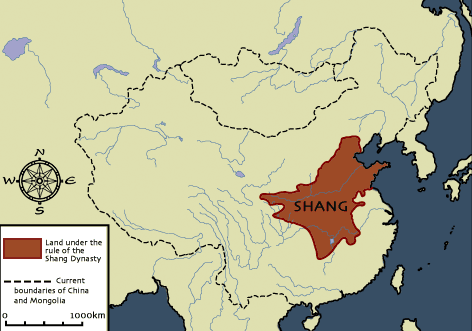Miss Casillo
Welcome to 6th grade


Ancient China Readings

Quick Write Promts
Write a short paragraph of what you think these pictures are about.

Helpful Websites
Chapter Overview
China's first civilization developed in the Huang He valley. The Shang and Zhou dynasties ruled China from about 1750 B.C. to 221 B.C. Chinese rulers claimed they had the Mandate of Heaven. Ancient Chinese society was divided into three distinct social classes: landowning aristocrats, farmers, and merchants. The family was the building block of China's society. The Chinese practiced filial piety, which required that children respect their parents and older relatives. After violence weakened the Zhou kingdom, the three Chinese philosophies of Confucianism, Daoism, and Legalism grew out of a need for order.
The Qin dynasty was ruled by a harsh leader who practiced Legalism. Qin Shihuangdi used force to unify China. Accomplishments of the Qin dynasty include a strong central government, creation of a single form of currency, and the construction of roads and a canal. Despite these advancements, the people of China hated Qin Shihuangdi, and four years after his death, they overthrew the dynasty.
The Han dynasty was founded by Liu Bang. Under the Han dynasty, China's empire grew in size and population. Han inventions included the waterwheel, paper, acupuncture, and the rudder. The invention of the rudder allowed the Chinese to travel to the islands of Southeast Asia and into the Indian Ocean. Chinese merchants also used the Silk Road to transport goods as far as Greece and Rome. After the fall of the Han dynasty, many Chinese began to practice Buddhism to cope with stress and fear.
What do you know? Use your textbook to help you figure out the answers?
|
|
||||
|
1 |
|
Farming communities developed in the valleys of the Huang He and __________ Rivers. |
||
|
|
|
A) |
Yellow River |
|
|
|
|
B) |
Chang Jiang |
|
|
|
|
C) |
Anyang |
|
|
|
|
D) |
Shang |
|
|
|
||||
|
|
||||
|
|
||||
|
2 |
|
__________ was China's first capital. |
||
|
|
|
A) |
Anyang |
|
|
|
|
B) |
Xia |
|
|
|
|
C) |
Tian Shan |
|
|
|
|
D) |
Zhou |
|
|
|
||||
|
|
||||
|
|
||||
|
3 |
|
China's upper class included royal officials and __________. |
||
|
|
|
A) |
farmers |
|
|
|
|
B) |
traders and artisans |
|
|
|
|
C) |
the king |
|
|
|
|
D) |
aristocrats |
|
|
|
||||
|
|
||||
|
|
||||
|
4 |
|
The majority of the Chinese were __________. |
||
|
|
|
A) |
warlords |
|
|
|
|
B) |
aristocrats |
|
|
|
|
C) |
farmers |
|
|
|
|
D) |
artisans |
|
|
|
||||
|
|
||||
|
|
||||
|
5 |
|
__________ led a successful rebellion against the Shang and founded the Zhou dynasty. |
||
|
|
|
A) |
Huang He |
|
|
|
|
B) |
Wu Wang |
|
|
|
|
C) |
Chang Jiang |
|
|
|
|
D) |
Qin |
|
|
|
||||
|
|
||||
|
|
||||
|
6 |
|
Which philosopy urges believers to give up their worldly desires? |
||
|
|
|
A) |
Confucianism |
|
|
|
|
B) |
Laozi |
|
|
|
|
C) |
Legalism |
|
|
|
|
D) |
Daoism |
|
|
|
||||
|
|
||||
|
|
||||
|
7 |
|
Who is considered to be ancient China's first great thinker and teacher? |
||
|
|
|
A) |
Laozi |
|
|
|
|
B) |
Hanfeizi |
|
|
|
|
C) |
Confucius |
|
|
|
|
D) |
Dao De Jing |
|
|
|
||||
|
|
||||
|
|
||||
|
8 |
|
The Great Wall of China was built to keep the __________ from attacking China. |
||
|
|
|
A) |
Japanese |
|
|
|
|
B) |
Xiongnu |
|
|
|
|
C) |
Han |
|
|
|
|
D) |
Luoyang |
|
|
|
||||
|
|
||||
|
|
||||
|
9 |
|
__________, a former peasant, founded the Han dynasty. |
||
|
|
|
A) |
Liu Bang |
|
|
|
|
B) |
Han Wudi |
|
|
|
|
C) |
Qin Shihuangdi |
|
|
|
|
D) |
Xiongnu |
|
|
|
||||
|
|
||||
|
|
||||
|
10 |
|
After the fall of the Han dynasty, the Chinese began to practice __________ to cope with stress and fear. |
||
|
|
|
A) |
Legalism |
|
|
|
|
B) |
Confucianism |
|
|
|
|
C) |
Daoism |
|
|
|
|
D) |
Buddhism |
|
















